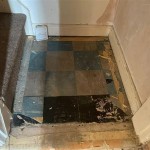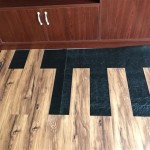1200 Square Feet Laminate Flooring Cost: A Detailed Breakdown
Laminate flooring has become a popular choice for homeowners due to its durability, aesthetic appeal, and relatively lower cost compared to hardwood or tile. When planning a flooring project, understanding the total cost is essential for budgeting effectively. This article provides a comprehensive breakdown of the expenses associated with installing 1200 square feet of laminate flooring, encompassing materials, labor, and other potential costs.
The overall cost of a laminate flooring project is influenced by several factors. These include the quality and thickness of the laminate planks, the complexity of the installation, the existing condition of the subfloor, and the geographic location. A higher-quality laminate with a thicker wear layer will naturally command a higher price than a thinner, less durable option. Installation costs can vary depending on whether the project is a DIY undertaking or requires professional installers. Subfloor preparation and any necessary repairs to the existing floor can also add to the total expense.
Key Point 1: Laminate Flooring Material Costs
The primary expense in any flooring project is the cost of the materials themselves. Laminate flooring is typically priced per square foot, allowing for easy calculation based on the area to be covered. Prices can range significantly based on the quality, brand, and features of the laminate. On average, laminate flooring can cost anywhere from $1 to $5 per square foot. This range reflects variations in thickness, wear layer, and aesthetic design.
For 1200 square feet, the material cost can therefore range from $1200 to $6000. This is a substantial range, highlighting the importance of carefully considering the type of laminate chosen. A budget-friendly option at $1 per square foot might be suitable for low-traffic areas or rental properties. However, for high-traffic areas or homes where durability is a priority, a higher-grade laminate costing $3 to $5 per square foot would be a more prudent investment.
It is also crucial to factor in waste during installation. Plan to purchase approximately 5% to 10% more laminate than the actual square footage of the room. This allows for cuts, mistakes, and fitting around irregularly shaped areas. Accounting for a 10% waste factor on 1200 square feet means purchasing an additional 120 square feet, bringing the total to 1320 square feet. This additional material will increase the material cost proportionally.
In addition to the laminate itself, underlayment is another essential material. Underlayment serves several important functions, including providing a moisture barrier, adding cushioning, and reducing noise transmission. The cost of underlayment can range from $0.30 to $1 per square foot, depending on its quality and features. For 1200 square feet, underlayment can add an additional $360 to $1200 to the overall material cost.
Other materials to consider include transition strips, baseboards, and molding. These are used to create a seamless transition between the laminate flooring and other flooring surfaces, as well as to cover the expansion gap around the perimeter of the room. The cost of these materials can vary depending on the style and material chosen, but typically ranges from $100 to $300 for a project of this size.
Key Point 2: Labor Costs for Installation
Choosing between a DIY installation and hiring professional installers is a crucial decision that significantly impacts the overall cost. A DIY installation can save on labor costs, but it requires time, effort, and a certain level of skill. If you lack experience with flooring installation, hiring professionals is often the better option to ensure a quality result and avoid costly mistakes.
Professional laminate flooring installation typically costs between $1 to $4 per square foot. This range reflects variations in labor rates, the complexity of the installation, and the geographic location. For 1200 square feet, the labor cost can range from $1200 to $4800. Factors that can increase the labor cost include the presence of stairs, oddly shaped rooms, and the need to move furniture.
It is advisable to obtain quotes from multiple installers before making a decision. This allows you to compare prices and services offered. Ensure that the quotes include all aspects of the installation, such as subfloor preparation, installation of the laminate flooring, and installation of transition strips and baseboards.
If the existing subfloor requires preparation, such as leveling or repair, this will add to the labor cost. Subfloor preparation can involve patching cracks, filling holes, or even replacing damaged sections of the subfloor. The cost of subfloor preparation can vary depending on the extent of the work required, but it can range from $0.50 to $2 per square foot.
While DIY installation can save money on labor costs, it is important to consider the potential risks. Mistakes during installation can lead to uneven surfaces, gaps between planks, and other problems that can detract from the appearance and durability of the flooring. Furthermore, incorrect installation can void the manufacturer's warranty.
Key Point 3: Additional and Hidden Costs
Beyond the cost of materials and labor, several other potential expenses can impact the overall cost of a laminate flooring project. These costs are often overlooked during the initial budgeting phase but can significantly increase the final price.
One such cost is furniture removal. If you are unable to move the furniture yourself, you may need to hire professional movers. The cost of furniture removal can vary depending on the amount of furniture and the distance it needs to be moved, but it can range from $100 to $500 or more.
Another potential cost is the disposal of old flooring. If you are replacing existing flooring, you will need to dispose of the old materials. Some installers include disposal in their quotes, while others charge an additional fee. The cost of disposal can vary depending on the type of flooring and the local regulations, but it can range from $50 to $200.
Unexpected repairs to the subfloor can also add to the overall cost. Once the old flooring is removed, it may be discovered that the subfloor is damaged or requires repair. These repairs can range from minor patching to major structural work, and the cost can vary accordingly.
Permits may also be required for certain flooring projects, particularly in older homes or in areas with strict building codes. The cost of permits can vary depending on the location and the scope of the project, but it can range from $50 to $200.
Finally, it is important to factor in a contingency fund for unexpected expenses. It is always a good idea to set aside a certain amount of money, typically 5% to 10% of the total budget, to cover any unforeseen costs that may arise during the project.
In summary, the cost of installing 1200 square feet of laminate flooring can vary significantly depending on the quality of the materials, the complexity of the installation, and the presence of any additional costs. By carefully considering all of these factors, homeowners can develop a realistic budget and avoid any unpleasant surprises during the project.

How Much Does Laminate Flooring Installation Cost 2024

Average Hardwood Flooring S In 2024 Forbes Home

How Much Does Flooring Installation Cost 2024 Guide
How Much Does It Cost To Install 1000 Square Feet Of Hardwood Floors Quora

How Much Does Flooring Installation Cost 2024 Guide

How Much Does Flooring Installation Cost 2024 Guide

How Much Does Laminate Flooring Installation Cost 2024

Cost To Install Laminate Flooring In 2024 Forbes Home

How Much Does Flooring Installation Cost 2024 Guide

New Flooring Cost Estimator Estimate Florida Consulting
Related Posts








